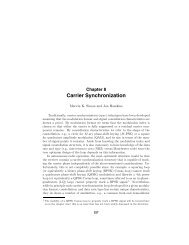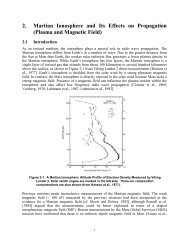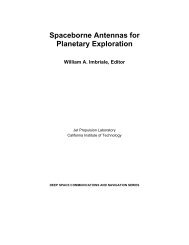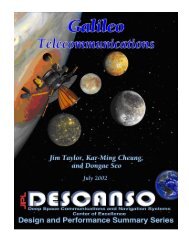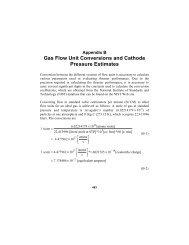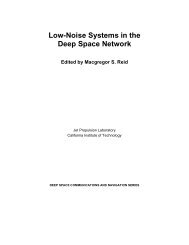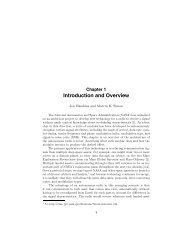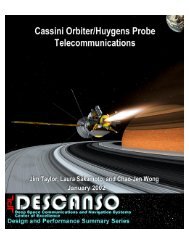Propagation Effects Handbook for Satellite Systems - DESCANSO ...
Propagation Effects Handbook for Satellite Systems - DESCANSO ...
Propagation Effects Handbook for Satellite Systems - DESCANSO ...
Create successful ePaper yourself
Turn your PDF publications into a flip-book with our unique Google optimized e-Paper software.
(typically below 3 to 5 dB at 11.7 GHz). This effect is believed to<br />
contribute to the poor correlation between the excess attenuation<br />
and the cross-polarization discrimination at these low values of<br />
attenuation.<br />
In Austin, TX (Vogel-1978, 1979) ice depolarization was<br />
associated with either thunderstorms during the summer months or<br />
with clouds in the presence of polar air masses during the winter.<br />
An example of the percentage of time that XPD was less than or equal<br />
to the abscissa given that the excess attenuation was less than or<br />
equal to 1 dB is shown <strong>for</strong> the 18 month period from 12 June 1976 to<br />
31 January 1978 and the period February 1978 to January 1979 in<br />
Figure 6.6-5. This curve shows that during 1976-78 45 per cent of<br />
the time that the XPD was less than or equal to 35 dB, there was<br />
less than 1 dB of attenuation; 24 per cent of the time that the XPD<br />
=30dBtheA= 1 dB and 12 per cent of the time that XPD = 25 dB<br />
the A ; 1 dB. In contrast, using the rain depolarization relation<br />
<strong>for</strong> 1 dB yields XPD = 40 dB. There<strong>for</strong>e systems requiring 30 dB or<br />
more XPD should expect a significant number of depolarization events<br />
due to ice.<br />
Also, it has been observed (Shutie, et al-1978) that at 30 GHz<br />
ice crystals yield a constant value (typically 90 degrees) of the<br />
relative phase angle between the crosspolar and copolar signals as a<br />
function of XPD as shown in Figure 6.6-6. The corresponding polar<br />
plot <strong>for</strong> a heavy rain event is shown in Figure 6.6-7. In this<br />
case the XPD was reduced by signal attenuation and the signal to<br />
noise ratio of the relative phase measurement decreased as the XPD<br />
decreased. This effect appears to increase the scatter of the phase<br />
angle with decrease in XPD.<br />
English investigators have also noted that rapid changes in<br />
relative phase and XPD are observed in thunderstorms and are<br />
associated with realignment of the ice crystal orientation by the<br />
electrostatic fields. In electrically-active storms~ these<br />
6-116<br />
‘





